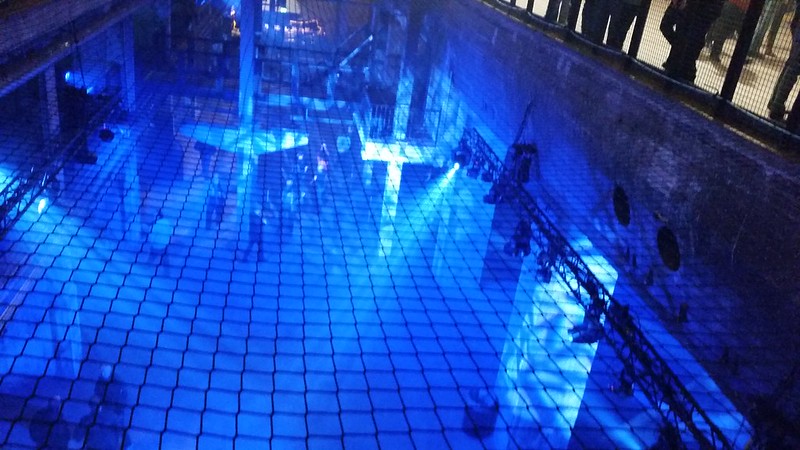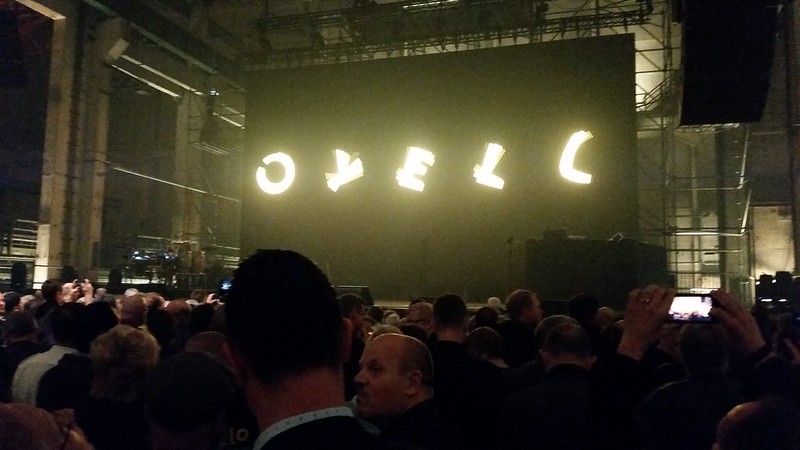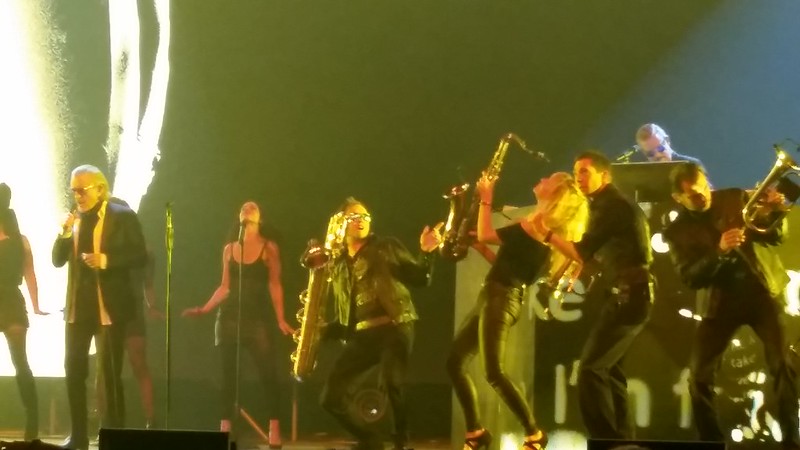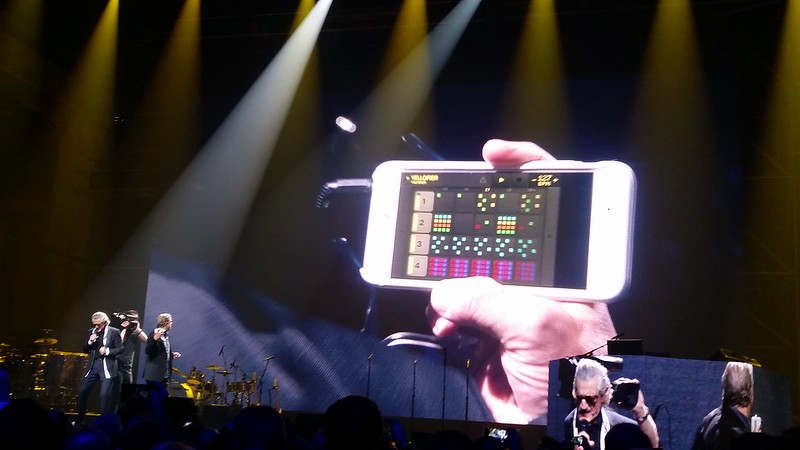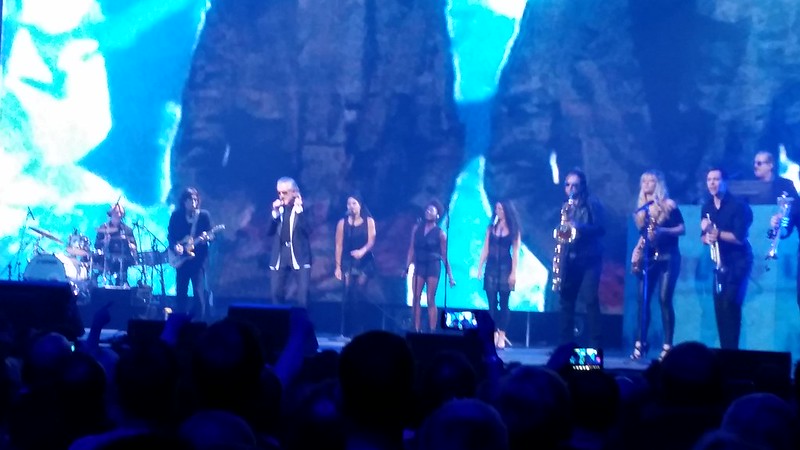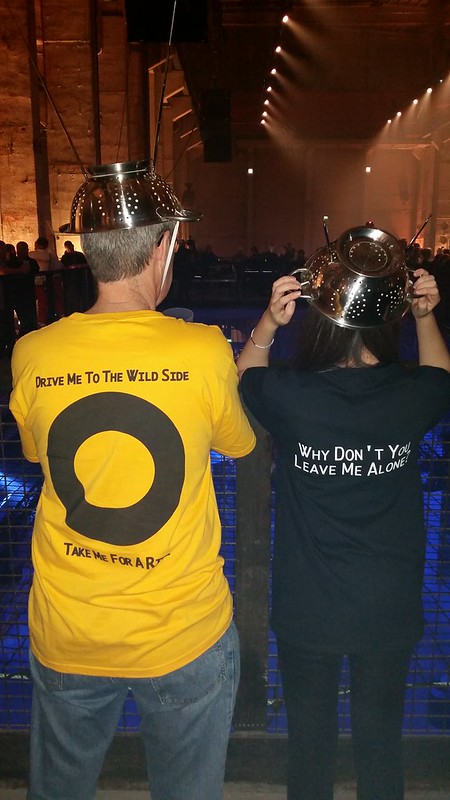So we'll come to that lot a bit later. This year, Linn didn't have a "factory event" arranged for the autumn / early Winter like they sometimes do - even though they've just launched Katalyst on the public - a major DAC architecture upgrade for the Klimax DS and DSM streamers. So a group of forum members built a demo wishlist and asked Linn very politely if we could come and have a listen. Which was the loose basis upon which an "annual event" was created for those invited along. In other words, a bunch of mates getting together to catch up, drink beer and listen to stuff they aspire to owning.
Whilst most of the group were local (meaning UK), we did have a forum member from Canada joining us on his personal crusade across Europe, so there was an international flavour to the group (being Scottish, English, Irish and Canadian). The night before was a curry followed by beer and lots of natter about what we might hear, what people have done to their music listening gear recently, what they might do next, a bit of politics around the forum etc. etc. In other words, geeky, alcohol fuelled natter. Our Canadian friend's recent tour of Linn systems in Europe was a constant thread returned to throughout the evening and how Linn can make their SPACE Optimisation tool easier for customers to get the best from - when done well it takes a Linn system several levels of performance higher, but sadly it is not often done well.
 |
| Visitors' Book |
After reasonable restraint in the pub the night before, we gathered at the factory ready for a 10:00 start - with everyone looking healthy enough to handle reasonably loud music. And here its worth mentioning Linn's choice of speaker for this event - the KEF Reference 5 floorstanders. A decent bit of kit, but not exactly big on bass, or at least not on this experience. Perhaps Linn had heard about the pub the night before and had selected these speakers in deference to delicate heads, or they'd deliberately set up SPACE to take bass energy out. But no, apparently not. As usual the welcome at Linn was warm, friendly and informal. Craig of marketing was looking after us, clearly now somewhat more confident meeting a bunch of forum diehards compared to last year, having got over a year of experience in the meantime. Teas / coffees and then off into one of the dem rooms (for those who know the place, the one on the right at the back of Linn Home).
A vast array of kit was laid out in the room, some on the equipment rack (extended by an extra 4 shelves for today) and some on the floor waiting its turn to perform. We had suggested some ideas on demos in advance and Linn had set up all of them for us, except the cheeky requests to hear products yet to be announced. Of course. A printed list of demos and list prices of each demo were made available to us. Probably not good to look at the list prices on the second page! We were hosted by a couple of senior guys from R&D - Ian who looks after circuit design and layout and Phil who takes the lead on speaker design. So why no Linn speakers? It was explained that there are only 2 pairs of speakers in the factory with externalised passive crossovers - something that helps with speedy system configuration changes. As all of us in the room are already at Akurate or Klimax level in the Linn hierarchy, Ian and Phil had decided that one of those pairs of speakers - Majik 140s - probably wasn't going to give us the insight into the upgrades we were hoping for, and the other pair - the KEFs - would be more appropriate in terms of price and performance. I guess there's also benefit in reminding the audience that Exakt filters are available for non-Linn speakers, in addition to those from Linn. Anyway, the KEFs did an admirable job during the morning to give a clear insight on the upgrades in the electronics. The KEF's passive crossovers have been removed from the cabinets and are housed in Akurate size cases with perspex tops. Consistency of speaker throughout the demo was appreciated by the group.
 |
| Dem Room |
DEMO 1:
Klimax DSM/1 (KDSM/1) which has a pre-Katalyst DAC and was, up until 6 weeks ago, Linn's top performing streamer/pre-amp against Klimax DSM/2 (KDSM/2) which is the newest version and includes the Katalyst DAC architecture. The Katalyst is a new DAC from a different manufacturer which allows for multiple separate power supplies to different functional parts of the DAC (e.g. clock, digital circuits, analogue circuits etc.). In addition to this, Linn altered some of the other areas of the circuit board layout whilst they had the opportunity to improve these too. The rest of the system was a Klimax Twin/Dynamik power amp and the KEFs in passive configuration. Interconnects throughout the day were Linn silvers, speaker cables the recently released K200. Ethernet cables and Exaktlink cables were not declared - but Linn likes to use pretty standard stuff here.
First a couple of tracks were played on the KDSM/1 and sounded very enjoyable, until we then heard them on the Katalyst equipped KDSM/2. Which is a very significant step forward. The music seems more joined up in terms of timing - instruments, voices etc., seeming better aligned. There's more texture and believability in vocals - they're more expressive. At first it seems a little bass light, but really its just a tightening up of control, perhaps the removal of some harmonics that shouldn't be there. In more hifi related terms there's more detail in the treble and imaging is sharper, but still not up there with the kind of imaging provided by an Exakt system. Going back to the KDSM/1 (which is still a very fine player) is like going from a full fat FLAC file down to a 192 MP3 - the difference is quite stark. A great achievement.
DEMO 2:
So is this new Klimax Katalyst equipped DSM with Klimax amplification better than an Akurate level Exakt system? This, for me, was probably one of the more significant demos of the day, and one that we'd eagerly anticipated and discussed at length in the pub the night before (and, strangely enough, the evening after).
The comparison was between the KDSM/2 (i.e. Katalyst equipped) with Klimax Twin versus Akurate Exakt DSM (AEDSM) with Akurate Exaktbox 10 DAC/Processor (AEBOX10) and 2x Akurate 4200/1 power amps. So a step down in hierarchy in Linn terms and a significantly lower overall cost of the electronics feeding the KEFs.
And this was quite some contrast. I felt that the presentation of the 2 systems was very different. But let's get one thing out of the way first - both of these options are very musical indeed, with, for me, little to differentiate them in musicality - ie the ability to play the tune and carry the emotion. However, in almost every other way, the Exakt system was better. Better separation of instruments and therefore clarity of the contribution from each, vastly better imaging, tighter more controlled bass lines and therefore ability to follow these lines and real coherence in the timing. The one area where I felt the Katalyst might just edge ahead was the expressiveness and "reality" of the vocals. But an easy choice - the cheaper Exakt system would be my choice without hesitation. For those who like vinyl, I can see the Katalyst passive might be very attractive - relative to Exakt it has that less precise, more smoothed together kind of sound.
Its interesting that, for me, the magnitude of the end to end system errors corrected by Exakt are more fundamental than the DAC architecture itsself. Given the step change going from Klimax DSM to Klimax DSM with Katalyst, I really didn't expect the non-Katalyst DACs in the Exaktboxes to give a better result. But they do, and its significant.
Katalyst is on the way for Exakt - first at Klimax level - and I suspect that is going to be astonishing. The Klimax Tunebox circuitry has been squeezed into the box and is going through final revisions just now. Katalyst for Akurate level is at the design stage and will be available in 6 and 10 channel versions. One of the benefits of the upgrade to Katalyst in the Klimax range is that the Exakt engine will be more powerful than the current version and will allow the running of dual-mono Exakt filters inside the 6 channel Klimax Exaktbox - great news indeed for those with only 3 drivers per speaker as it will be possible to get Linn's best performance from one KEBOX rather than needing 2. So the impossible for many could become aspirational for some.
DEMO 3:
Akurate Exakt DSM with Akurate Exaktbox 10 into Akurate 4200/1 amps and the KEFs versus exactly the same system but with the Exaktbox 10 swapped for 2x Akurate Exaktbox 6s. What's the difference? Well not a lot - except to say that the Exaktbox 6 has a better optimised circuit layout on the boards (which also allows a slightly different approach to the power supplies to the DACs). But the same circuit topographies.
I think all would agree that this was a bigger upgrade than we were expecting. It is more significant that you'd think was reasonable or even logical. I don't think there were only one or two parameters that improved - rather there was an all-round improvement in everything be that musicality or any of the more hifi-like terms you care to mention. A nice one this, and worth having, particularly if you have speakers that have better dual-mono Exakt filters than the stereo filters.
DEMO 4:
Replacing the 2x Akurate 4200/1 amplifiers with 8x Klimax Solo/Dynamiks.
Gulp. The single biggest price jump of today's demos - 60,000 gbp. Was it the single biggest difference? Probably not. That was either from non-Katalyst DSM to Katalyst DSM, or possibly from Akurate Exaktbox to Klimax Exaktbox (see below). But what do the Solos bring? Well, this is always one I feel is difficult to describe. What does the Solo do? Well there's this whole kind of feeling of effortlessness to the sound. The amps just flow the music through and make it louder. Sure, there's more detail, more slam / control in the bass and better image stability. But its the way it does what it does rather than the what. And that's hard to describe - perhaps its the difference between a piece of tech that sounds like its responding to the incoming signal, and one that works with that signal? More fluid, more organic, more believable. Very nice indeed.
DEMO 5:
Replacing the 2x Akurate Exaktbox 6s replaced by their (not yet Katalyst) Klimax equivalents. The rest of the system remaining as AEDSM streamer/pre-amp, 8x Solo amps and the KEFs.
Unlike the move from Klimax to Klimax with Katalyst in the DSMs - which made the former sound rather less than satisfactory - upgrading an Exaktbox from Akurate to Klimax level (and back again), didn't give that same type of difference. Rather the Klimax is a refinement and improvement on what the Akurate box was doing - its just all-round better on detail / resolution, separation of instruments and emotional content of the vocals. It will be interesting to hear the Klimax Exaktbox when it gets the Katalyst upgrade in the Spring.
DEMO 6:
As above, but the AEDSM was replaced by a Klimax Exakt DSM (KEDSM).
A small difference in the sound here - a touch more detail, a little more space between instruments. Really, this is just a very thin layer of icing on the cake and only really something to do if the aesthetics of the kit is important, or if you've done everything else possible in terms of the rest of the Exakt / amplification equipment. Nice but not necessary and really emphasises how good the AEDSM is in terms of price / performance. Just one caveat on that - if you're heavily into playing vinyl then the KEDSM has a better ADC stage which would possibly be important to you, and justify the extra cost. We didn't have the ADC comparison in the demos today.
DEMO 7:
Is a Klimax DS/2 a better source for an Exakt system than an AEDSM?
So these sources were swapped back and forth - and rather like the AEDSM vs KEDSM comparison above - not much in it - perhaps the KDS/2 edged it a little, but this is really about where are you starting from in terms of your current kit - if you have a KDS/2 and don't need the inputs of a DSM, then it works very well. However, if you need inputs and want to go Exakt, then moving from KDS/2 to AEDSM is not really an issue.
DEMO 8:
Klimax DS/3 (ie Katalyst equipped) vs KEDSM as an Exakt source - here there's an even smaller difference and really not much to discuss. Either is good, but it would be strange to choose KDS/3 and then shortly afterwards move to Exakt.
DEMO 9:
Akurate Exaktbox 10 vs 2x Klimax Exaktboxes.
See DEMO 5 above - exactly this, but slightly more so.
So overall, what did we learn?
- Katalyst is a fantastic step forward
- Katalyst in Exakt is likely to be something extraordinary
- Katalyst in Akurate (and the Exaktbox) is very much anticipated
- For me, the sweet spot in terms of price vs performance is currently with AEDSM and 2x Akurate Exaktbox 6 and 4200/1 amplifiers (possibly with Twins rather than 4200/1, but we didn't hear that exact combination)
With many thanks to Ian and Philbo who put so much effort into putting these demos together and running through them all - there are very few (if any) other places we could've had such a comprehensive set of demos - the team built exactly what was asked for by the attendees. All these changes went extremely smoothly with no gitches with any of the kit and that helps to demonstrate that this streaming, networking and Exakt stuff is now very mature indeed.





